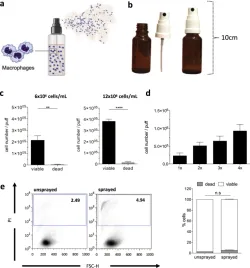Lopez-Rodriguez, E., Roldan, N., Garcia-Alvarez, B., Pérez-Gil, J.: J Lipid Res. 2019;60(2):430-5.
To access the full article, click here:

TLC has traditionally been used to analyze lipids isolated from membrane complexes. Here, we describe a method based on the combination of TLC and SDS-PAGE to qualitatively analyze the protein/lipid profile of membrane complexes such as those of lung surfactant. For this purpose, native lung surfactant was applied onto a silica TLC plate in the form of an aqueous suspension, preserving not only hydrophilic proteins associated with lipids but also native protein-lipid interactions. Using native membrane complexes in TLC allows the differential migration of lipids and their separation from the protein components. As a result, (partly) delipidated protein-enriched bands can be visualized and analyzed by SDS-PAGE to identify proteins originally associated with lipids. Interestingly, the hydrophobic surfactant protein C, which interacts tightly with lipids in native membrane complexes, migrates through the TLC plate, configuring specific bands that differ from those corresponding to lipids or proteins. This method therefore allows the detection and analysis of strong native-like protein-lipid interactions.




